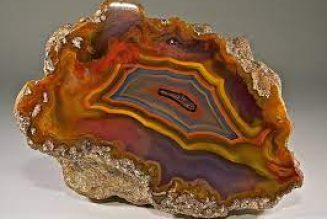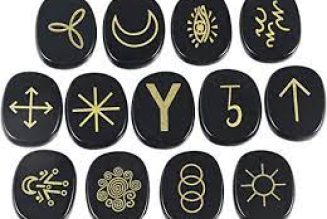Selenite, satin spar, desert rose, gypsum flower are crystal habit varieties of the mineral gypsum.
All varieties of gypsum, including selenite and alabaster, are composed of calcium sulfate dihydrate (meaning that it has two molecules of water), with the chemical formula CaSO4·2H2O.
Selenite contains no significant selenium – The similar names both derive from Greek selḗnē (σελήνη ‘Moon’)
Some of the largest crystals ever found are of selenite, the largest specimen found in the Naica Mine’s Cave of the Crystals being 12 metres long and weighing 55 tons.
History and etymology
“Selenite” is mostly synonymous with gypsum, but from the 15th century, it has named the transparent variety that occurs in crystals or crystalline masses.
The name derives through Middle English selenite from Latin selenites, ultimately from Greek selēnítēs líthos (σεληνίτης λίθος, lit. ’moon stone’).
It got this name because people historically believed the mineral waxed and waned with the cycles of the Moon.
Distinguishing characteristics
The main distinguishing characteristics of crystalline gypsum are its softness (hardness 2 on Mohs scale, soft enough to scratch with a fingernail) and its three unequal cleavages.
Other distinguishing characteristics include its crystal habits, pearly lustre, easy fusibility with loss of water, and solubility in hot dilute hydrochloric acid.
Varieties
Though sometimes grouped together as “selenite”, the four crystalline varieties have differences. General identifying descriptions of the related crystalline varieties are:
Selenite
Most often transparent and colorless
If selenite crystals show opacity or color, it is caused by the presence of other minerals, sometimes in druse[
Satin spar
Most often silky and fibrous;[8] chatoyant; can exhibit some coloration
The satin spar name has also been applied to fibrous calcite (a related calcium mineral), which can be distinguished from gypsum by its greater hardness (Mohs 3), rhombohedral cleavage, and reaction with dilute hydrochloric acid.
Desert rose
See also: Desert rose (crystal)
Rosette-shaped gypsum with outer druse of sand or with sand throughout – most often sand colored (in all the colors that sand can exhibit)[
The desert rose name can also be applied to barite desert roses (another related sulfate mineral) – barite is a harder mineral with higher density
Gypsum flower
Gypsum flowers are curved rosettes of fibrous gypsum crystals found in solution caves.








